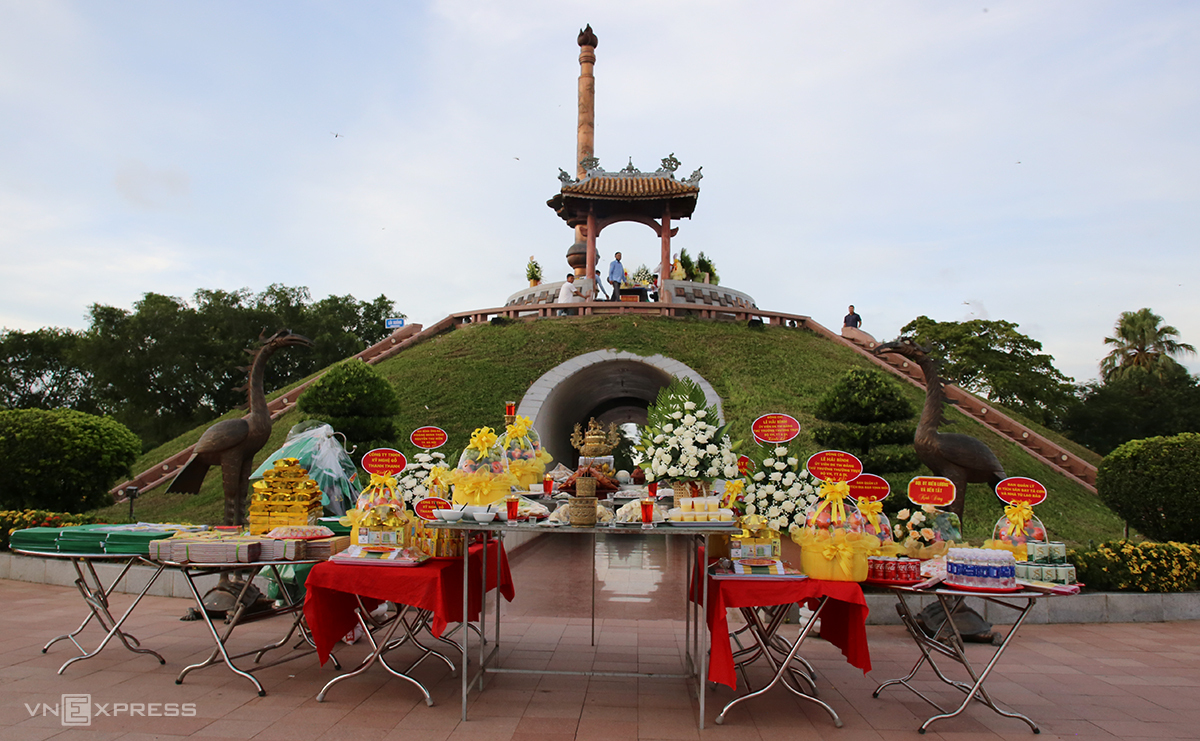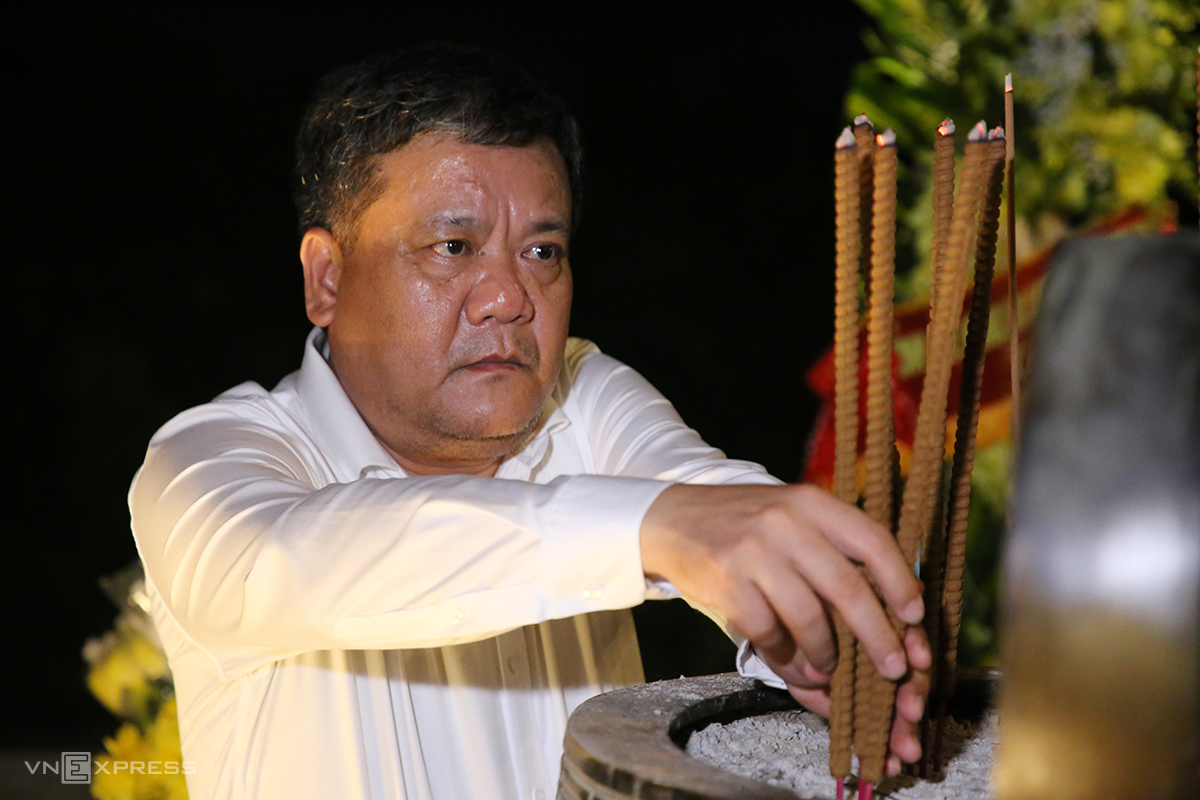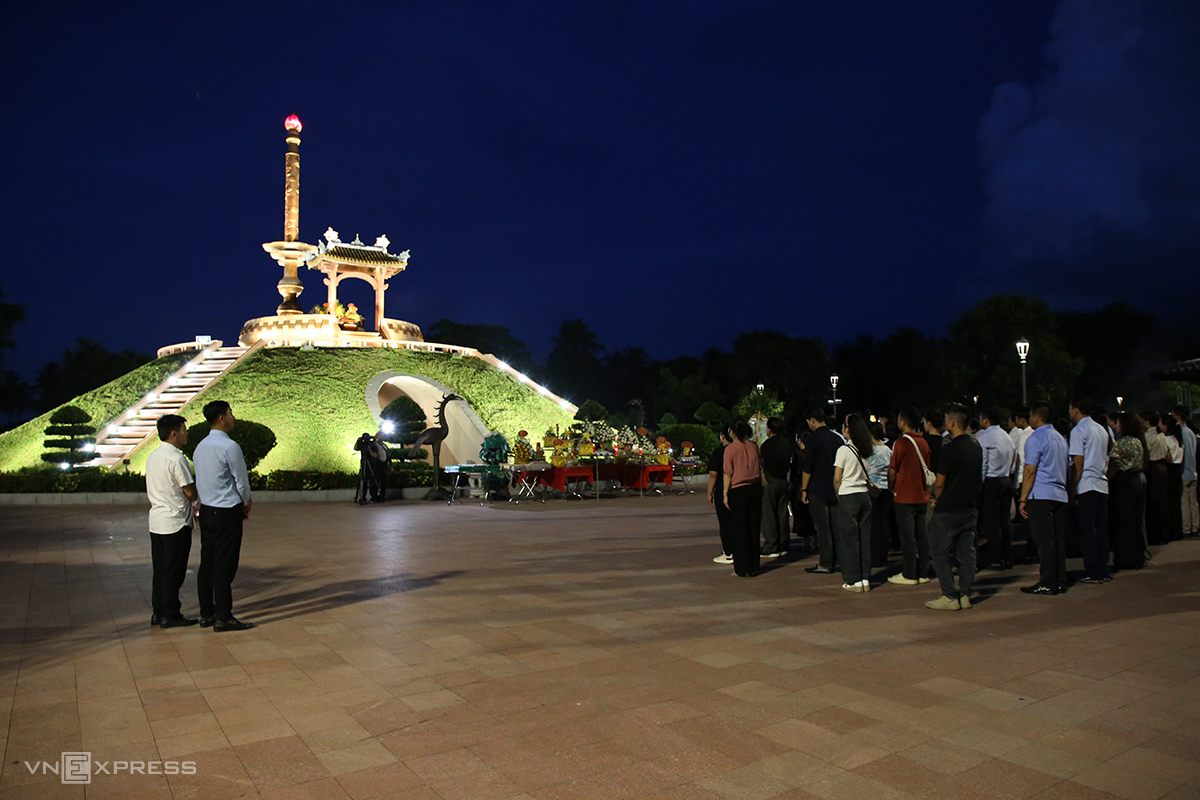The ceremony began at 6:15 p.m. in front of the memorial monument in the center of the Quang Tri Citadel relic site, a replica of the mass grave of thousands of soldiers. The offering table was prepared according to Vietnamese tradition, including fruits, chicken, roasted pork, sticky rice, sweet soup, and votive paper offerings. Many individuals and organizations sent flower baskets and fruit baskets to the offering table to express their gratitude.
 |
The offering table displayed under the memorial monument to the fallen soldiers at the citadel. Photo: Dac Thanh |
The offering table displayed under the memorial monument to the fallen soldiers at the citadel. Photo: Dac Thanh
The ceremony was attended by provincial leaders, representatives from various departments, the provincial museum, relic site staff, and some residents and tourists. The relic site management board recounted the days of fighting and the heroic sacrifices of thousands of soldiers in the battle to defend the citadel.
After a minute of silence observed by all attendees, provincial chairman Tran Phong and provincial people's council chairman Nguyen Dang Quang offered flowers and incense at the memorial monument. Mr. Phong performed the rituals of pouring wine, tea, and water, scooping porridge into bowls, and scattering the offerings, including rice, porridge, puffed rice, and tobacco.
 |
Mr. Tran Phong, chairman of Quang Tri province, offers incense at the citadel memorial monument. Photo: Dac Thanh |
Mr. Tran Phong, chairman of Quang Tri province, offers incense at the citadel memorial monument. Photo: Dac Thanh
Ms. Cap Thi Thien Trang, head of the Le Duan Memorial and Quang Tri Citadel Management Board, said this annual ceremony has been held for over 20 years on the day marking the end of the 81-day battle (28/6-16/9/1972) to honor the martyrs who defended the citadel and Quang Tri town.
Following the offering ceremony by provincial leaders, residents took turns burning incense. "Many soldiers fell in the battle and their bodies have not been found. These incense sticks are offered to express our gratitude to the previous generations," said Nguyen Phuoc, who lives near the citadel.
 |
Attendees observed a minute of silence to remember the fallen soldiers. Photo: Dac Thanh |
Attendees observed a minute of silence to remember the fallen soldiers. Photo: Dac Thanh
On the morning of 28/6/1972, the Republic of Vietnam government, with US support, launched a counteroffensive codenamed "Lam Son 72" to recapture Quang Tri, beginning 81 days and nights of bombardment of the citadel area.
According to information from the Quang Tri Citadel Museum, the total amount of bombs and ammunition dropped by the US and the Republic of Vietnam government on the citadel and Quang Tri town during the 81-day recapture campaign was equivalent to the explosive power of seven atomic bombs. This included 328,000 tons of bombs, 552,000 105 mm rounds, 55,000 155 mm rounds, and 8,164 175 mm rounds. US naval artillery fired 615,164 rounds, US aircraft conducted 1,650 bombing raids, and Republic of Vietnam aircraft conducted 594 raids.
On 16/9/1972, the People's Army of Vietnam withdrew from the citadel, and the wounded were also evacuated. The battle to defend the Quang Tri Citadel contributed significantly to the victory at the Paris Peace Accords, paving the way for the liberation of South Vietnam and the reunification of the country.
Dac Thanh












